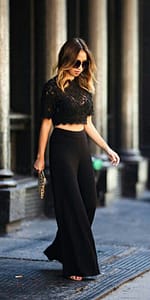Bra Fitting Guide
Bybrawise Bra Basics
Bra Fitting Guide (with chart) | BraWise.com
Basic steps to find your proper bra size
There are two key components to consider when fitting your bra correctly: One is band size and the other is cup size.
On each bra you’ll find a band size written as a number (ie. 32, 34, 36) and a cup size written as a letter (A, B, C, etc.). Band size is generally easier to fit, while getting the cup size right can be more difficult. In fact, cup size may vary according to each brand, style and female body.
That doesn’t mean you can’t get the right bra for you. It does mean you might have to experiment a bit with garments when you get to the store. (For those of us who enjoy retail therapy, this should not be a hardship.)
The BraWise approach to getting your correct bra size depends initially on your ability with a measuring tape. This is the simplest way to start. Getting the best measurements possible means you get the best result possible. With this in mind, we suggest you start with your best-fitting unpadded bra. You want to choose a bra that doesn’t minimize or enhance your breasts in order to ensure that your measurements reflect the “real” you. It is also helpful if you take these measurements with another person, who can help with placement of the measuring tape.


- Band Size: When taking this measurement, be sure to wear your best-fitting (unpadded or “enhanced”) bra. Place a measuring tape around your rib cage directly below your bust. The tape should be flat on the band and parallel to the floor. Round the number to the closest whole inch for your band size. If the result is an even number, for example 34”, add four inches – leaving you with a size of 38”. If the number is odd, for example 31”, add five inches – leaving you with a size of 36”. This final number represents your band size.
- Cup Size: As you stand with your arms at your sides, place the measuring tape around your body at the fullest part of your breasts. Take this number and round it up or down to the closest inch, for example 36”. Now, take this number, and subtract the number you figured in Step 1 (band size). The difference in the inch size is your cup size according to the inch value. For example, if your cup measurement is 36” and your band size was 34”, subtract the second from the first, leaving you with 2” which, according to the chart below, is a B cup.
| Difference (inches) | Standard Cup Size |
| 0” – ½” | AA |
| ½” – 1” | A |
| 2” | B |
| 3” | C |
| 4” | D |
| 5” | DD or E |
| 6” | DDD or F |
| 7” | G |
| 8” | H |
| 9” | I |
| 10” | J |
And there you have it! You now have the basics in bra fitting. Check out Common Bra-Fitting Problems for more custom fitting instructions. Use these tips to evaluate how your selected bra size is working for you. After all, the results you get from using a measuring tape may not be the final word in the dressing room.
The fitting of a bra is as much art as science. If you have any questions, do not hesitate to consult a professional bra fitter for more help.









